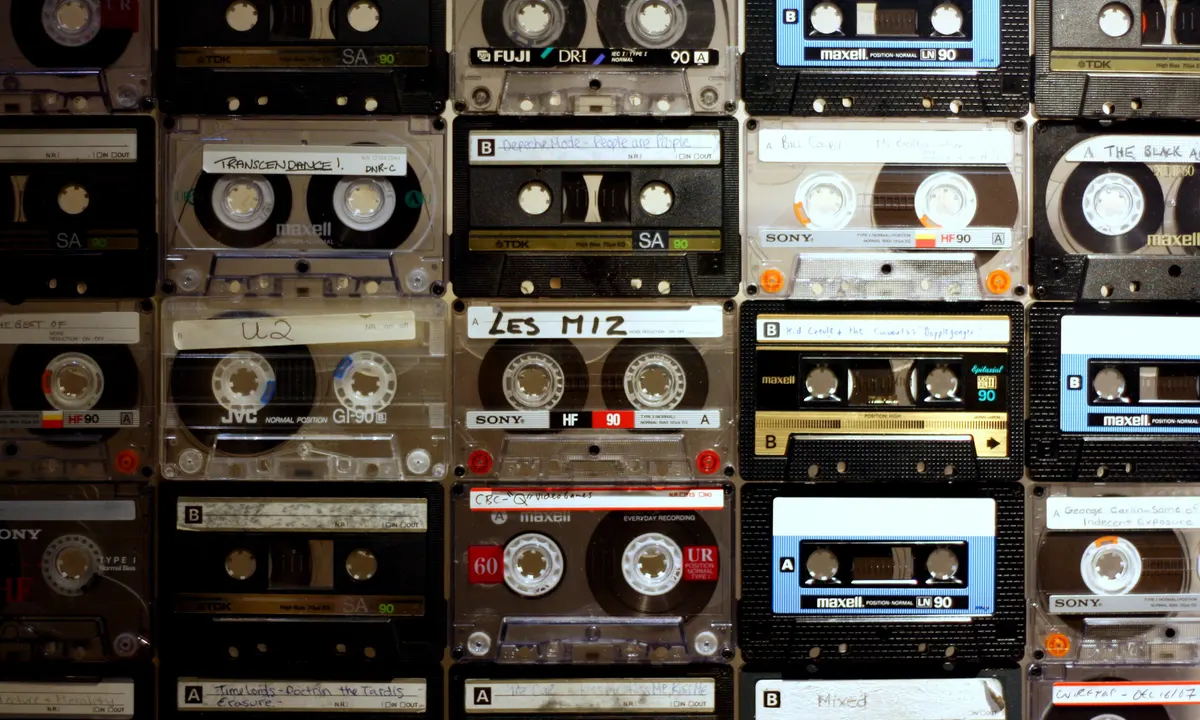Cassette tapes were first introduced by the Dutch company Philips in 1963. The original design was called the Compact Cassette, and it was intended to be a smaller and more portable alternative to reel-to-reel tape recorders. The cassette tape consisted of two spools of magnetic tape enclosed in a plastic shell, with a thin ribbon of magnetic tape running between them. The tape was coated with a magnetic material, and when a magnetic head passed over it, it could record or play back audio.

At first, cassette tapes were primarily used for dictation and recording of spoken-word material. However, with the advent of portable cassette players, the format soon became popular for music as well. The introduction of the Sony Walkman in 1979 revolutionized the way people listened to music, making it possible to take your music with you wherever you went.
Throughout the 1980s and into the 1990s, cassette tapes were the dominant music format, with millions of albums sold on cassette each year. However, the rise of CDs and digital music formats like MP3s eventually led to the decline of the cassette tape. The last major music label to release cassette tapes was Warner Music Group in 2003.

Despite its decline in popularity, the cassette tape has remained a beloved format for many music enthusiasts and has seen a resurgence in recent years. Nostalgic music fans have embraced cassette tapes as a retro and tactile way to listen to music, and many independent artists continue to release music on cassette tape as a low-cost and DIY alternative to other formats.
Fun facts about cassette tapes:
- The first cassette tape was developed by Philips in 1962 and introduced to the market in 1963. It was called the Compact Cassette.
- The original cassette tapes could hold up to 30 minutes of music on each side, and the sound quality was significantly lower than that of vinyl records.
- The term “mixtape” originated in the 1980s when people would record their own custom compilations of songs onto cassette tapes.
- The popularity of cassette tapes led to the creation of the Walkman, a portable cassette player developed by Sony in 1979 that revolutionized the way people listened to music.
- The largest cassette tape ever made was the TDK SA-X 100, which could hold up to 100 minutes of music on each side.
- In the 1980s and 1990s, cassette tapes were often used for computer data storage, especially for home computers like the Commodore 64 and the Sinclair ZX Spectrum.
- Cassette tapes are still used today in some countries for language learning materials and other educational purposes.
- In the 1990s, some cassette tapes were sold with a special screwdriver that allowed users to adjust the tape’s tension and improve the sound quality.
- The cassette tape was inducted into the National Recording Registry by the Library of Congress in 2010 as a significant cultural artifact.





